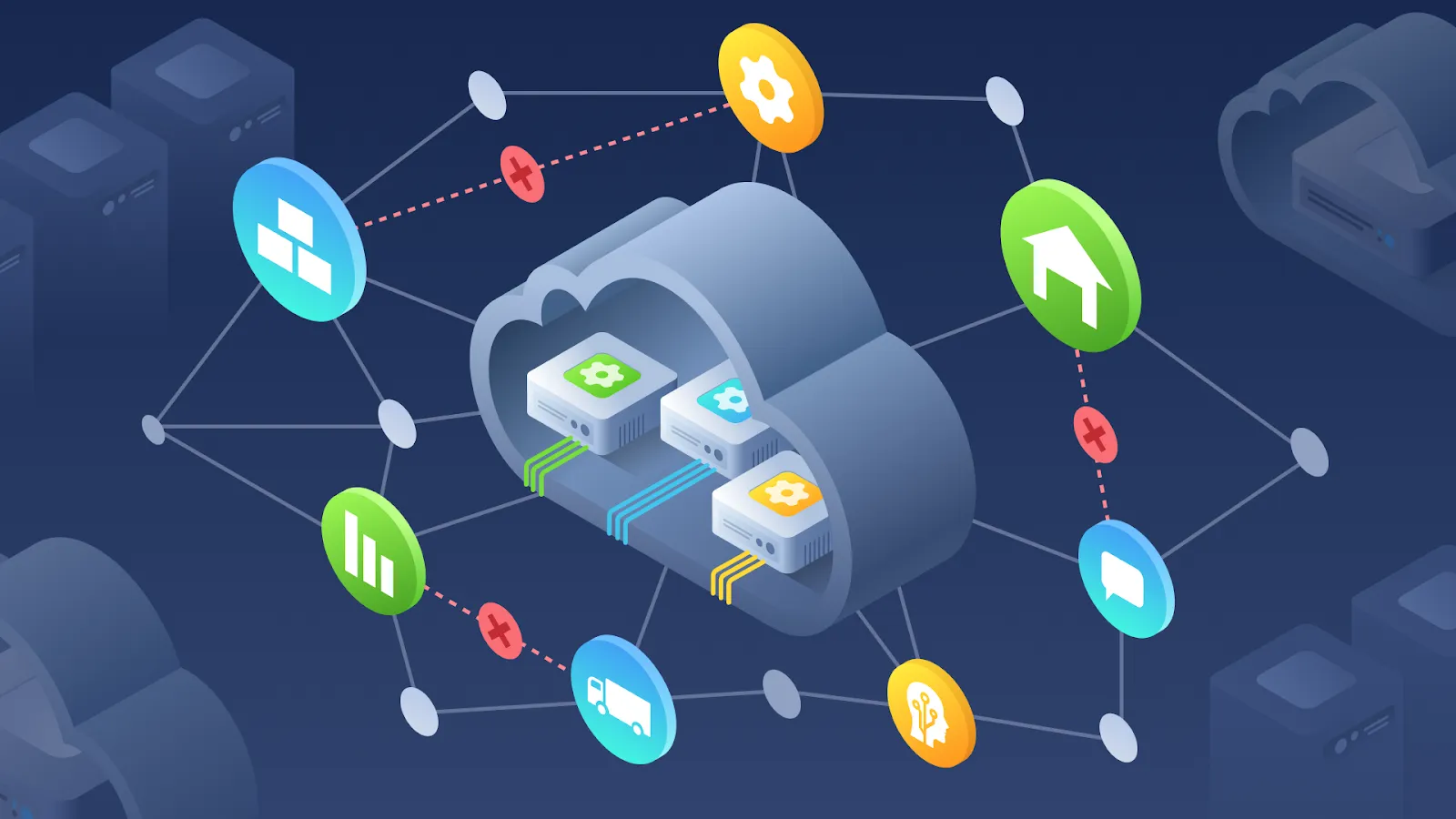Internet of Things (IoT) is a powerful tool for transforming industries, automating processes, and improving ROI. Among the industries ripe for change is construction, and the IoT technology has great potential for increasing productivity and operational efficiency and enhancing onsite safety. Thanks to deploying IoT sensors and devices, companies can improve worksite visibility at all stages of construction projects in real-time, including post-construction operations.
According to the Global Construction Survey, “76% of construction business operators consider new tech adoption as a part of their strategic plan or vision.” That also involves different IoT implementations. Since the construction industry is changing rapidly, companies using IoT solutions can successfully address typical workplace challenges and get multiple benefits. After all, IoT makes these firms more responsive to the fluctuating requirements of the industry.
In this blog post, we will analyze the top seven use cases of IoT in construction. The review of these applications may encourage your business to adopt IoT and accelerate digital transformation.
Just-in-time (JIT) provisioning
When you have labeled your supply units using radio frequency identification (RFID) tags, they can be counted by a relevant system on site. Thus, if the count drops below a predefined level, the system will trigger a specific request from a central system for ordering more. In this case, the idle time reduces, and companies get an opportunity to complete their construction projects on time. Besides, you will save costs since the automated JIT provisioning eliminates the need to order more supplies that you cannot use at once.
Tools & equipment tracking
Implementing the IoT technology allows tracking what tools your company already has on-site. That reduces the time necessary to look for different lost and misplaced items and the money to spend on replacements. Also, thanks to GPS trackers with IoT-enabled sensors, you can track the location of the vehicle fleet and position landscaping equipment precisely.
At the same time, IoT solutions help monitor the performance data of machines and vehicles. That can enhance your ability to maintain them effectively and repair them quickly. Of course, predictive maintenance is cost-saving because fixing broken components may be incredibly expensive. Moreover, unexpected failures with equipment can result in downtime, which in turn extends the timeframe of your construction project.
Finally, the IoT-enabled sensors tracking indicators like excessive vibration or temperature allow identifying the most appropriate time for servicing equipment. Such sensors send warnings to relevant connected devices, which helps operators fix a problem before further damages are caused. Thus, applying IoT lengthens the life of your machinery and increases its resale value.
Remote operations & activity monitoring
IoT-connected surveillance cameras and various measurement sensors allow controlling and adjusting machinery remotely, increasing the accuracy of operations, tracking and reporting the movement and progress of employees in real-time. All of that helps coordinate building activities more efficiently, reduce idle time, and link workers’ performance with relevant tasks and processes on-site.
In addition, IoT Solutions can monitor the employees’ health and alertness, along with working conditions, for preventing fatigue and reducing the risk of potential accidents. For example, apart from tracking workers’ location, IoT wearables can monitor signs of distress, including abnormal pulse rates or elevations. IoT devices as simple as a button can boost non-digital workflows by connecting digital and physical worlds via a simple interface.
Lastly, IoT technology makes it possible to create a digital real-time job site map. That allows updating risks associated with the construction work and notifying all employees when they get closer to particular risks or enter a dangerous environment. Thus, thanks to real-time data provided by IoT-enabled devices, they are more predictive regarding job-site issues. Depending on device type, different communication channels can be used to further accommodate environment-specific needs.
Fuel saving
The cost of each construction project corresponds to the fuel consumption because large sites require using machines that burn thousands of dollars per day. But with the appropriate control over expenditures, effective refueling management, timely maintenance, and the ability to upgrade machinery, you can reduce the project’s final cost and its duration dramatically. All of that can be done using IoT-enabled fuel sensors on your construction site.
Augmented reality (AR)
Augmented reality can be used for multiple reasons at different stages of your project. Typically, companies in the construction industry implement AR for planning and modifying projects, automating measurements, providing onsite project information, enhancing team collaboration, and conducting safety training.
Applying AR makes the direct generation of 3D models on a 2D plan possible. Construction firms can use specific 3D modeling software for producing interactive models of projects and presenting them to their clients. It means that clients are involved at the early stages of the process.
In addition, teams can implement AT technology for organizing presentations, discussing, and examining all project details. That allows making necessary changes before they become significantly expensive to alter. In turn, this approach helps avoid delays and save costs.
But the AR application can be efficient not only at the pre-execution phase. For instance, during the construction, augmented reality helps measure various physical aspects of your project, including height, width, and depth. That enables project managers to define the existing inconsistencies and inaccuracies in the structure and make relevant changes to prevent potential issues.
Concrete curing
With concrete curing sensors, you can speed up construction schedules. Such IoT-enabled devices provide monitoring of concrete’s maturity via temperature probes and then transmit real-time data to the cloud. You have to embed the sensors in concrete during casting for tracking its curing. That allows managers to plan further construction work accurately.
An appropriate in-situ estimation regarding the concrete’s compressive strength brings to your company the possibility to optimize numerous critical construction tasks. Besides, if you know its maturity, you can differentiate profitability and loss because such knowledge helps you schedule and cycle formwork and optimize labor.
Building information modeling (BIM) & digital twins
BIM is a process that involves an intelligent model of your building. Thus, BIM software enables engineers to create a digital structure before its physical building. That helps them understand all physical and functional nuances of the construction process better. Also, the particular software provides builders, engineers, and project managers with the opportunity to detect issues during the initial phases and determine the existing discrepancies appropriately.
During the construction, IoT-enabled devices allow obtaining reports on different changes in materials or environment conditions; tracking separate parts, details, or items; and updating BIM models in real-time. Therefore, when the problem is detected by an IoT-enabled sensor, a BIM model connected with this IoT device will analyze and diagnose this issue.
In the construction industry, applying digital twins means you always have access to as-built and as-designed models that are continuously synced in real-time. Digital twins link real-world objects and their digital representations that are constantly updated with the help of data from IoT-connected sensors. This information comes from devices located on physical objects and is used for representing virtual objects. Then, your company can use such digital representation to continue visualizing, modeling, analyzing, simulating, and planning its construction project.
Among the most critical implementations of digital twins in the construction industry are: automating progress monitoring, planning resources, tracking safety, assessing quality, and optimizing equipment. After all, the digital twins can provide real value and ensure that real-time data collected and transmitted by IoT-enabled sensors are used for creating a significant real-world simulation.
The bottom line
The construction industry remains in the research stage of the IoT adoption journey. Today, many construction sites generate large volumes of valuable information that is not being used in any way. However, this data can allow facilities managers and construction employees to start using a proactive approach. That will help maintain building systems and manage construction sites more efficiently.
Although there can be different predictions regarding the potential job losses, implementing IoT technology will not replace humans in the construction industry. Instead, it will allow altering business models, eliminating expensive errors, reducing worksite injuries, and making building operations more effective. Ultimately, the most appropriate approach for construction firms to apply the IoT solutions is to prioritize investment depending on the areas where IoT will make the most immediate influence according to their unique requirements.




